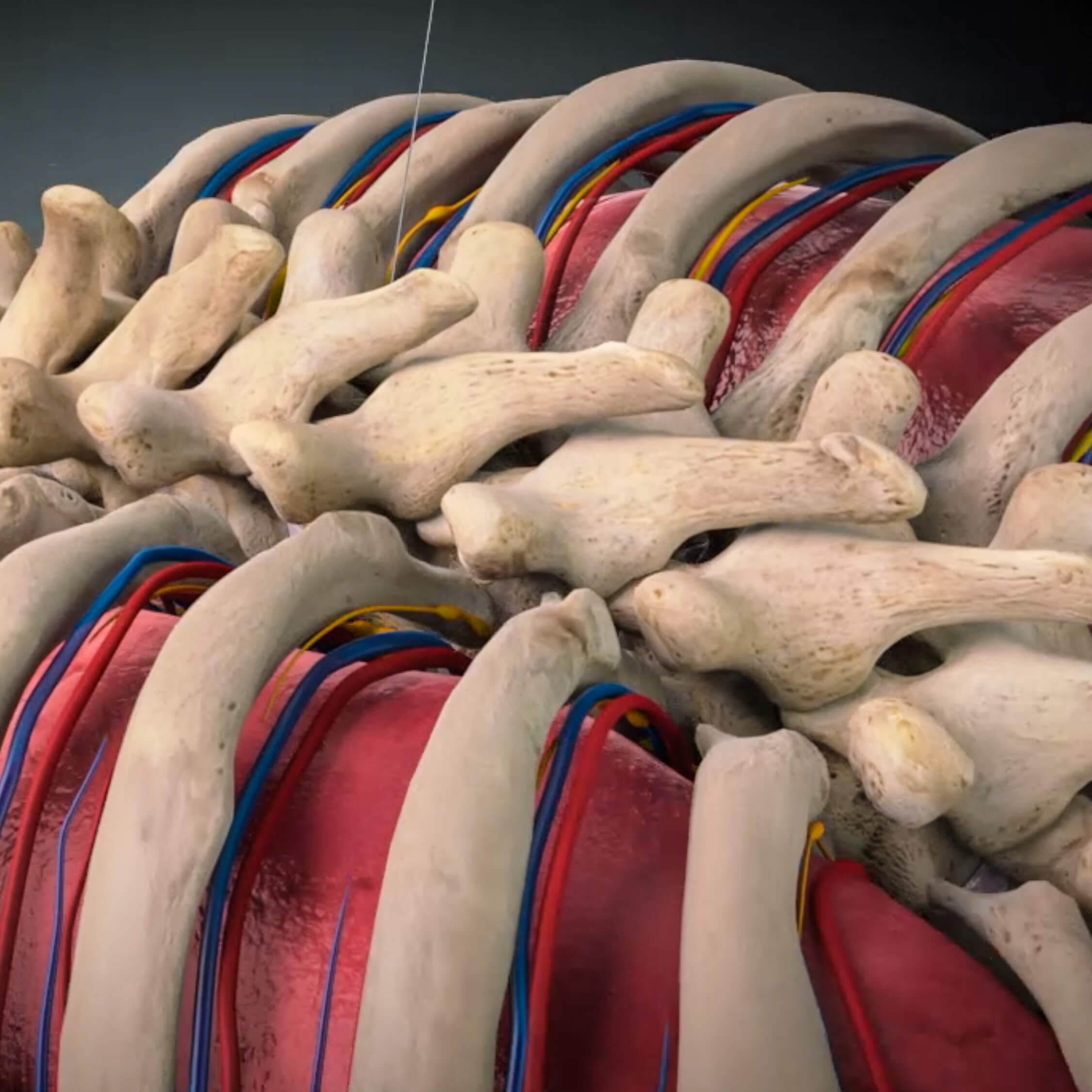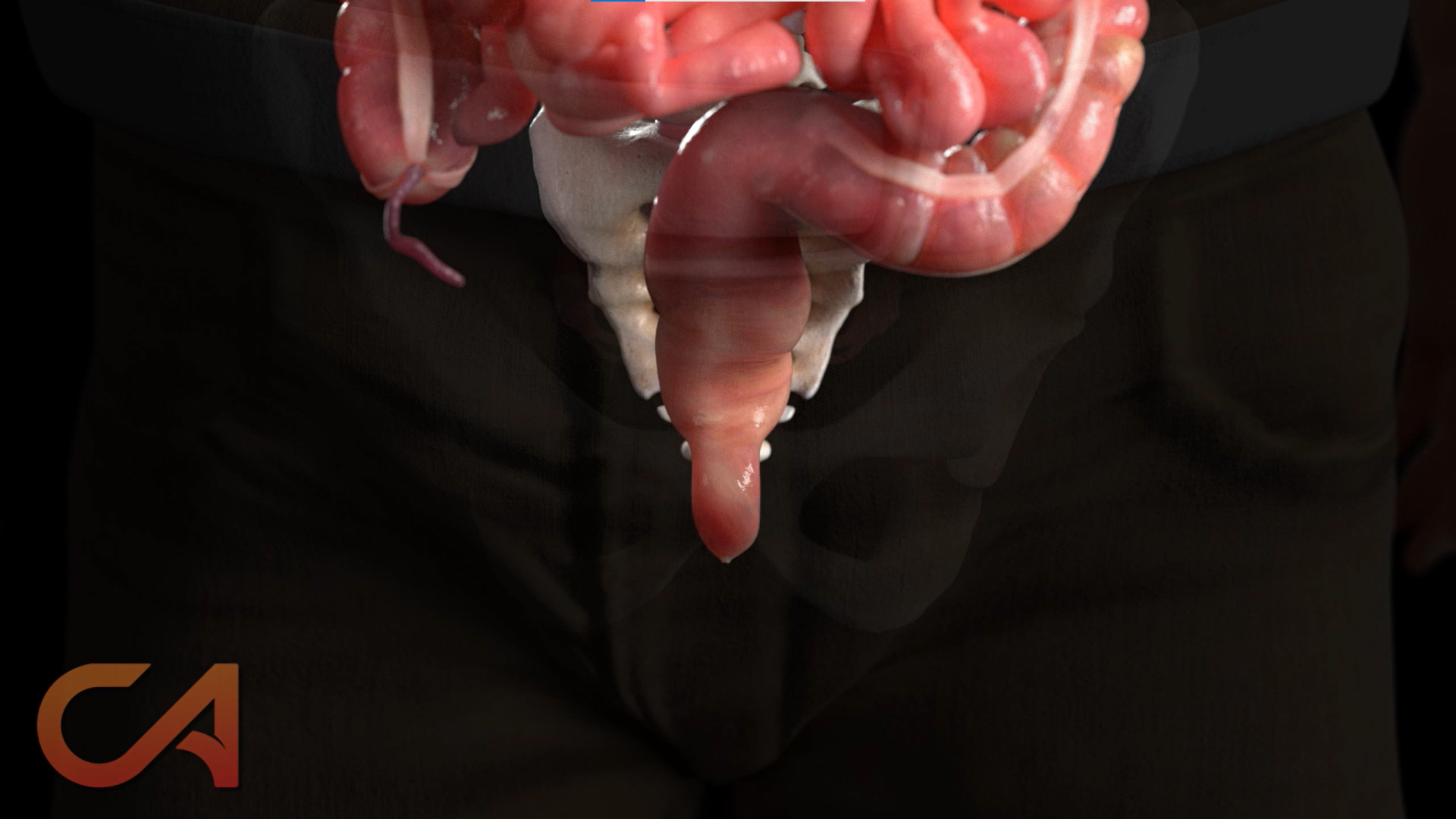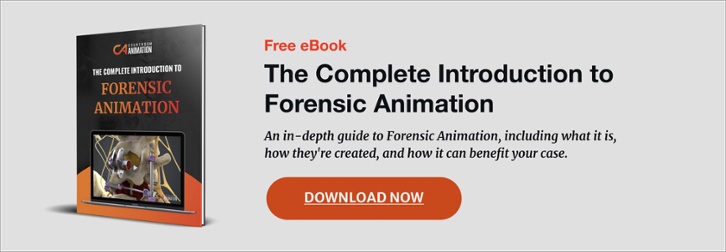
When it comes to medical-related civil cases, medical graphics have become a frequently used tool in court. In fact, the global medical animation market is expected to reach $488 million by 2026.
As medical graphics play a more significant role in the legal industry, its presence in the courtroom will grow. Studies have found that spending on legal technology will increase by approximately 12% by 2025 — and for good reason.
Medical graphics are a type of dynamic presentation that holds the attention of today’s media-savvy fact finder, and educates them on complex subject matters. Today, there are a countless number of animation vendors and visual storytellers for attorneys to choose from to accomplish their visualization needs.
Those needs can include proving that a medical professional’s action, or inaction, was negligent or incorrect, which can be a laborious process. Attorneys have also found that using medical graphics help bridge the knowledge gap, allowing their audience to better understand the technical medical procedures or injuries involved in their case.
However, there are three common missteps that attorneys often make when sourcing and utilizing medical graphics for their case. These include using a limited selection of still images, forgoing medical expert collaboration, and undervaluing the impact of these visuals throughout the entire litigation process.
In this blog, we outline the details of these mistakes and how attorneys can circumvent them.
#1. Using Limited Visuals
Put yourself in the shoes of the jury: Which do you think would be more impactful on their deliberation process and elicit a stronger emotional response? A single still image showing a diagram of the surgery, or an in-depth animation that demonstrates every step of the surgery from multiple perspectives?
A medical animation, or multiple medical graphics, would evoke more sympathy in the jury or other legal parties. A former partner and trial lawyer at Jones Day, Kerri Ruttenberg, explained in an interview:
“The question is no longer whether to use graphics in the courtroom, but rather how to do it most effectively.”
When presenting a limited selection of still images or illustrations, your viewers will not fully comprehend or commiserate your client’s experience. They may not understand the extent of the damages, how a surgeon’s actions were negligent, the lasting physical damage of your client, or what actually went wrong.
How to avoid this:
Don’t discount using multiple medical illustrations and or a full animation. Courtroom Animation has worked on numerous medical malpractice cases where medical legal graphics, in addition to a 3D animation, proved essential for landing successful settlements and large verdicts.

Sample Medical Graphic from Courtroom Animation
Using a medical animation video in addition to medical graphics enables you to leave the jury with a unified, dominant image of your choice. This type of visual presentation pulls all of your facts together into a cohesive narrative.
Even if your case doesn’t warrant a complex and lengthy animation, having multiple stills or even a few short surgery animations can make the difference between an unfavorable outcome and a favorable one.
Plus, it creates a more memorable experience — ask yourself, “What image do I want the jury to remember?”
If you have multiple visuals, you can use one graphic to label certain anatomy, another to highlight any scans or medical images that relate to your argument, and more. Any medical still that is presented in court, however, needs to have been reviewed and verified by a medical expert.
#2. Using Visuals Without Medical Expert Collaboration
It’s critical to paint a compelling and precise picture of your client’s medical journey. If you have a handful of complex operative reports to introduce to the jury, a visual can help simplify the story and strengthen your argument, but it needs to be reviewed by a medical expert.
A medical professional is required so that they can review the visuals and testify, or give their deposition, and report that it is medically accurate.


Two 3D Medical Graphic Samples from Courtroom Animation
It is vital to have accurate representations that match the medical data from your client’s case to ensure admissibility. Medical graphics are not all fabrications of an operation or injury; they do not form new conclusions or data. Thus, if they are validated by a medical expert, they have a high chance of being admissible.
How to avoid this:
If you hire a medical animation studio, ask if they have a recommended medical professional they use for their medical graphics. Some experienced medical animation companies have their own medical experts that they can collaborate with to save you time. For example, Courtroom Animation has certified medical professionals that help during the medical graphic creation process.
To prepare your case and utilize medical graphics, download our free checklist, “How to Prepare Your Case for Working with a Forensic Animation Studio.”
Thoroughly prepare with your expert witness to ensure your visual needs are fully communicated and verified. A medical expert can be brought in during mediation or trial with your visual exhibits.
#3. Assuming Visuals are Only Useful During Trial
Medical cases can take months or even years to resolve. For example, a New England Journal of Medicine study found that the average time between an injury and the resolution of a medical malpractice case was about five years.
If you want to land a successful settlement as soon as possible, don’t hold off on creating your medical exhibit. If your case goes to trial, you can still use your medical stills and admit new ones to address any new arguments in your case.
How to avoid this:
When you are finding an appropriate vendor to achieve your visual strategy, ask how long the animation team needs to create a graphic. Most experienced legal animation studios have fast turnaround times, especially with medical graphics as they are less time-consuming to create than animations.
If you have an up-coming mediation date, find a studio that can work with tight deadlines and still provide accurate visuals.
No matter what stage of the legal process your case is in, a legal graphic will add an eye-catching visual aid to your courtroom repertoire.
Capture Your Audience’s Attention with Medical Graphics
You have a command of the facts and law of your civil case — and we know that legal technology is only a conduit for your client’s story. However, to tell your story effectively in today’s multimedia world, dynamic courtroom technology is essential to hold the viewer’s attention and communicate with maximum impact.
And when it comes to using that courtroom technology, remember to use more than one still, collaborate with a medical expert, and use visuals at every stage of the legal process.
While working together, the Courtroom Animation team will apply expert design to help bring a strategic vision to your core arguments. We are committed to being a partner with you throughout the entirety of your case. With a 99% admittance rate and experience with over 2,000 cases, we are committed to helping you and your client achieve a successful result.
“Courtroom Animation’s cutting-edge work is of the highest quality in the industry. They did a fantastic job with the medical illustrations and video simulations to powerfully convey our client’s injuries to the jury.”
– Spencer Lucas, Attorney at Panish Shea & Boyle LLP
